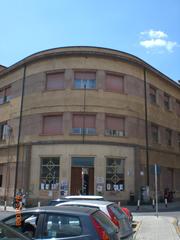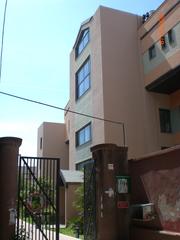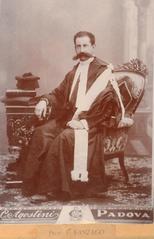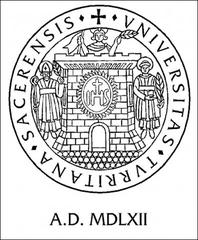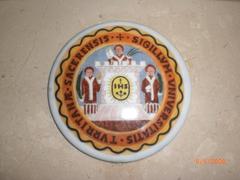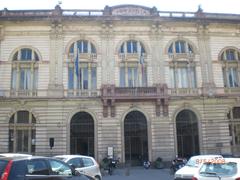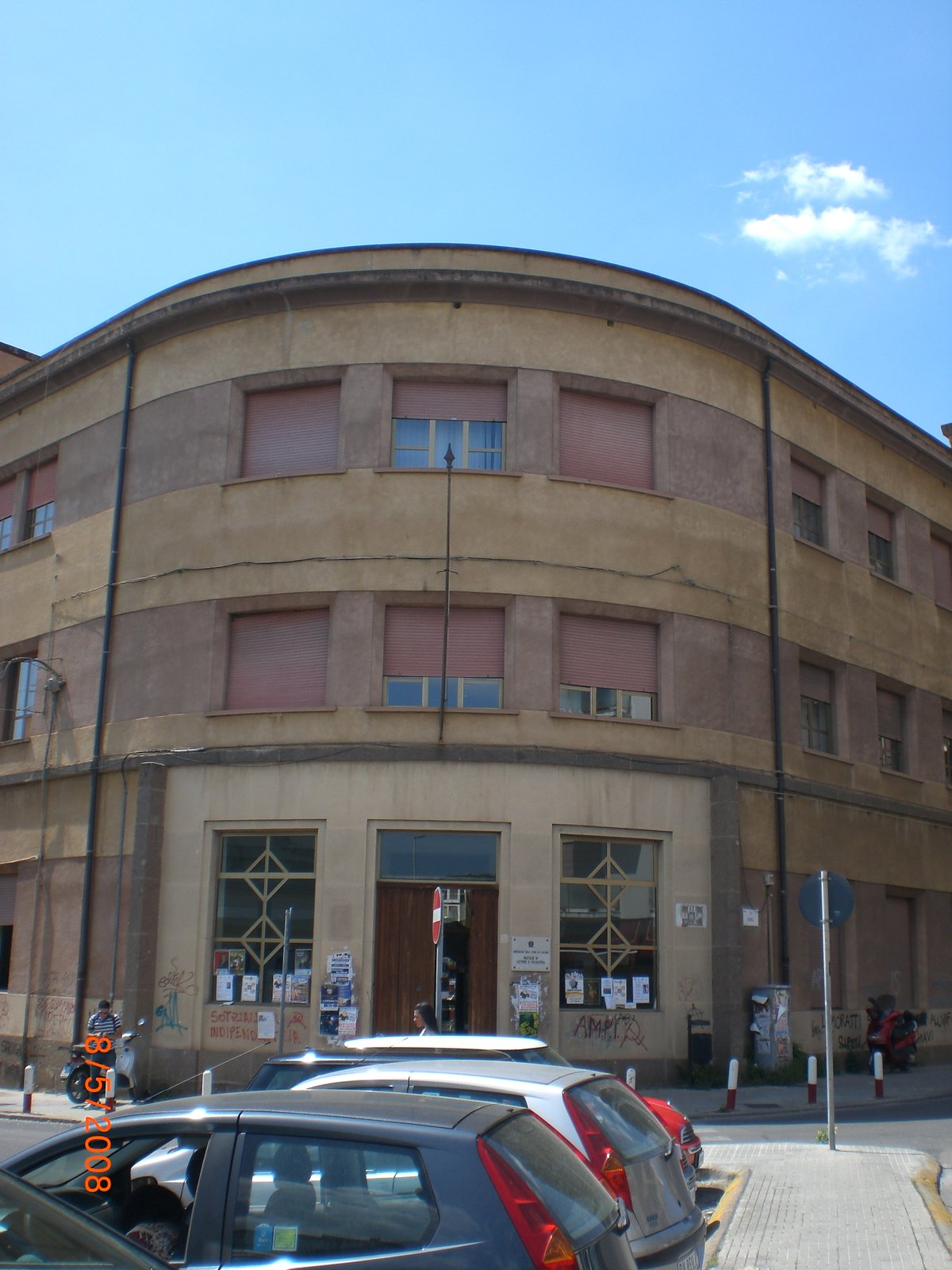
University of Sassari Visiting Hours, Tickets, and Historical Sites Guide
Date: 14/06/2025
Introduction: The University of Sassari’s Rich Heritage
Nestled in the heart of Sassari, Sardinia’s second-largest city, the University of Sassari (Università degli Studi di Sassari, UNISS) stands as both a prestigious academic institution and a prominent cultural landmark. Established in 1562, it is one of Italy’s oldest universities, renowned for its Renaissance and Baroque architecture, deep-rooted academic traditions, and integration with the vibrant urban fabric of Sassari. Visitors are invited to explore not only the university’s captivating campus but also its significant role in shaping the region’s intellectual and cultural landscape (University of Sassari Official Website).
This guide provides comprehensive and up-to-date information on visiting hours, tickets, guided tours, accessibility, and nearby attractions. It also highlights the university’s historical development, architectural treasures, notable alumni, and travel tips to ensure a memorable experience for all visitors.
Table of Contents
- Introduction: The University of Sassari’s Rich Heritage
- Historical Development: From Foundation to Modernization
- Visiting the University: Hours, Tickets, and Tours
- Campus Layout and Architectural Highlights
- Accessibility and Travel Tips
- Academic and Cultural Life
- Nearby Attractions and Events
- Practical Information: Accommodation, Transportation, and Amenities
- FAQ: Planning Your Visit
- Conclusion
- References and Useful Links
Historical Development: From Foundation to Modernization
Foundation and Early Growth (16th–18th Centuries)
The University of Sassari was conceived in 1558 through the initiative of Alessio Fontana, a distinguished member of the Imperial Chancellery under Emperor Charles V. Officially founded in 1562, the university was shaped by Jesuit administration and ecclesiastical support, notably from Archbishop Antonio Canopolo. Early curricula focused on classical studies, philosophy, and theology, soon expanding to include law and medicine, establishing Sassari as a leading center of learning in Sardinia and the Mediterranean (UNISS History).
Expansion and Reform (19th–20th Centuries)
Following Italy’s unification in the 19th century, the university broadened its academic offerings and modernized its governance. It became particularly renowned for legal, medical, and agricultural studies, and developed specialized research centers in fields like environmental science and veterinary medicine in the 20th century (Times Higher Education Profile).
Modern Era: Academic Innovation and Regional Integration
By 2010, the university had transitioned to a departmental structure, now comprising 13 departments and four satellite campuses (Sassari, Olbia, Nuoro, Oristano), each specializing in different academic disciplines. This evolution has enhanced research, international collaboration, and community engagement (EduRank University of Sassari).
Visiting the University: Hours, Tickets, and Tours
Visiting Hours
- Main Campus and Administrative Buildings:
Open Monday to Friday, from 8:30 AM to 6:00 PM.
Some areas may have reduced hours on weekends or during academic holidays. - mUNISS – University Science Museum:
Open Monday to Saturday, 10:00 AM to 5:00 PM (with a lunch break).
(mUNISS – University Science Museum)
Tickets and Entry
- General Access:
Entry to most public areas, courtyards, and lecture halls is free. - Special Exhibitions & Museum Entry:
Entry to the Science Museum and select exhibitions may require tickets (approx. €5 for adults, with discounts for students and seniors). - Guided Tours:
Available by advance booking through the university’s visitor or public relations office. Tours are primarily in Italian, with English support available upon request.
(UNISS Contact)
Booking and Visitor Services
Visitors are encouraged to check the university’s official website or contact visitor services in advance for up-to-date information on opening hours, ticketing, and tour availability.
Campus Layout and Architectural Highlights
Urban Integration and Campus Design
Located at Piazza Università 21, the university’s campus is a seamless part of Sassari’s historic center. Unlike isolated campuses, UNISS’s buildings are interspersed among city streets, allowing visitors to experience both academic life and the city’s lively urban atmosphere (iSchoolConnect).
Historic Palazzi and Adaptive Reuse
Many university faculties and administrative offices are housed in restored noble palaces (palazzi) dating from the 16th and 17th centuries. The main administrative building at Piazza Università is a striking example of neoclassical architecture, while other faculties showcase Baroque and Renaissance elements (gettyimages.com).
Modern Research Facilities
Recent decades have seen the addition of contemporary buildings—featuring sustainable design and state-of-the-art laboratories—on the city’s periphery to accommodate science and technology departments.
Libraries and Study Spaces
The main university library, located in a historic building, offers a blend of classical architecture and modern amenities, including digital workstations and collaborative spaces. Additional departmental libraries are spread across campus, each reflecting their host building’s character.
The mUNISS Science Museum
A highlight of the campus, the mUNISS – University Science Museum, holds approximately 150,000 artifacts, from scientific instruments to natural specimens, providing a fascinating glimpse into the region’s scientific heritage (mUNISS – University Science Museum).
Accessibility and Travel Tips
-
Getting There:
The university is centrally located and easily walkable from Sassari’s main attractions. Public buses and trains connect Sassari to the rest of Sardinia, and the Alghero-Fertilia airport is about 30 minutes away by car (HikersBay). -
Campus Accessibility:
Most main buildings are wheelchair accessible, though some historic sites may have limited access. Visitors with specific needs should contact the university in advance. -
Language:
Italian is the main language, but English is increasingly spoken among staff and students. Language support is available for international visitors (iSchoolConnect). -
Best Time to Visit:
The climate is typically Mediterranean, with mild winters and warm summers. The best months to visit are April–June and September–October, when crowds are smaller and weather is pleasant.
Academic and Cultural Life
Home to over 12,000 students and 700 staff, the University of Sassari fosters a dynamic environment with frequent academic conferences, exhibitions, and public seminars. The academic calendar is punctuated by local festivals like the Cavalcata Sarda and Faradda di li Candareri, in which the university community actively participates (Strictly Sardinia).
Notable Alumni
The university counts among its alumni:
- Francesco Cossiga: 8th President and 42nd Prime Minister of Italy
- Antonio Segni: President and Prime Minister
- Enrico Berlinguer: Influential politician
- Sebastiano Satta & Salvatore Satta: Renowned poet and novelist/jurist
Their achievements have cemented the university’s reputation both nationally and internationally.
Nearby Attractions and Events
Combine your visit to the university with exploration of Sassari’s rich heritage:
- Piazza d’Italia: The city’s central square, surrounded by neoclassical buildings (The Crazy Tourist).
- Cattedrale di San Nicola: A stunning Baroque cathedral near the campus (Visit Italy).
- Church of Santa Maria di Betlem: Known for its blend of Romanesque, Gothic, and Baroque styles (Visit Italy).
- Museo Nazionale Sanna: Archaeological and ethnographic treasures (Lonely Planet).
- Fontana del Rosello: 17th-century fountain and city icon.
- Corso Vittorio Emanuele II: Main street for shopping and dining.
Food tours offer a chance to sample local specialties and Sardinian wines (Strictly Sardinia).
Practical Information: Accommodation, Transportation, and Amenities
- Accommodation:
Sassari offers diverse options near the university, including Morfeo B&B, Palazzo Pilo, and Magnolia (HikersBay). - Transportation:
The compact city center is walkable; public buses, trains, and taxis are available for longer distances. - Amenities:
Pharmacies, healthcare, public Wi-Fi, and plentiful cafes and bookstores ensure a comfortable visit.
FAQ: Planning Your Visit
Q: Are tickets required to visit the University of Sassari?
A: General access to public areas is free. Tickets may be required for special exhibitions or museum entries; check the official website or contact visitor services for details.
Q: How can I book a guided tour?
A: Contact the public relations office in advance to arrange a tour. Tours are usually in Italian, with English available upon request.
Q: What are the university’s visiting hours?
A: Main buildings are open Monday to Friday, 8:30 AM–6:00 PM. Museums and exhibitions may have different hours.
Q: Is the campus accessible for those with disabilities?
A: Most facilities are accessible; contact the university for specific accommodations.
Q: What historical sites are nearby?
A: Piazza d’Italia, Cattedrale di San Nicola, Church of Santa Maria di Betlem, Museo Nazionale Sanna, and Fontana del Rosello are all within walking distance.
Conclusion
The University of Sassari is a living testament to Sardinia’s academic, architectural, and cultural heritage. With its blend of Renaissance palazzi, modern research centers, and active student life, the university offers visitors a unique and enriching experience at the crossroads of history and innovation. Coupled with Sassari’s vibrant city life and nearby historical sites, a visit to UNISS is an invitation to discover the authentic spirit of Sardinia.
For up-to-date visitor information, event schedules, and bookings, consult the University of Sassari Official Website and consider downloading the Audiala app for audio tours and travel tips.
References and Useful Links
- University of Sassari Official Website
- mUNISS – University Science Museum
- Times Higher Education Profile
- EduRank University of Sassari
- The Crazy Tourist – 15 Best Things to Do in Sassari
- Visit Italy – Things to Do in Sassari
- Lonely Planet – Sassari Travel Guide
- Strictly Sardinia – Things to Do in Sassari
- iSchoolConnect – What to Expect While Attending the University of Sassari
- HikersBay – Sassari Travel Information
